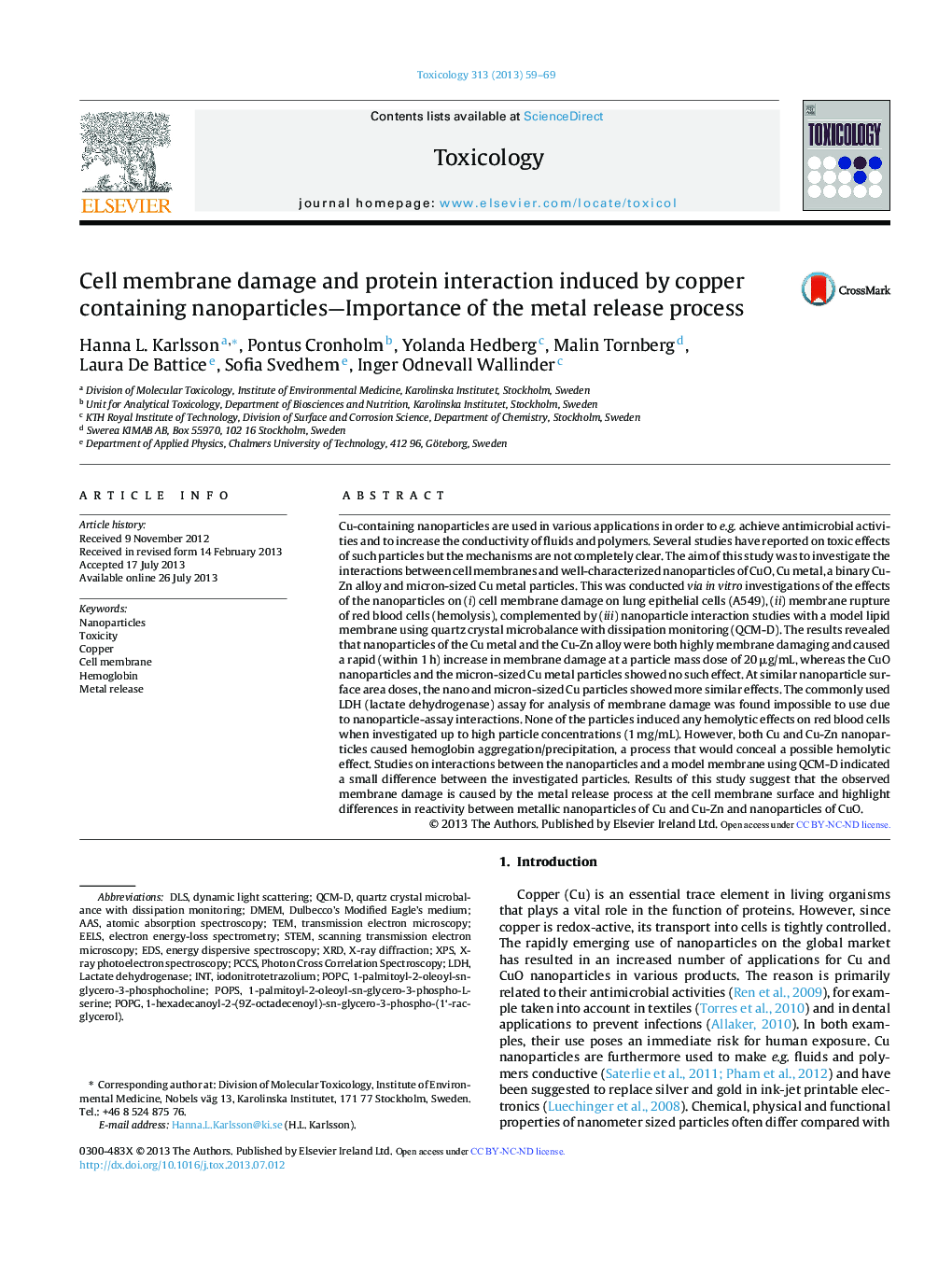| کد مقاله | کد نشریه | سال انتشار | مقاله انگلیسی | نسخه تمام متن |
|---|---|---|---|---|
| 5859303 | 1132468 | 2013 | 11 صفحه PDF | دانلود رایگان |

Cu-containing nanoparticles are used in various applications in order to e.g. achieve antimicrobial activities and to increase the conductivity of fluids and polymers. Several studies have reported on toxic effects of such particles but the mechanisms are not completely clear. The aim of this study was to investigate the interactions between cell membranes and well-characterized nanoparticles of CuO, Cu metal, a binary Cu-Zn alloy and micron-sized Cu metal particles. This was conducted via in vitro investigations of the effects of the nanoparticles on (i) cell membrane damage on lung epithelial cells (A549), (ii) membrane rupture of red blood cells (hemolysis), complemented by (iii) nanoparticle interaction studies with a model lipid membrane using quartz crystal microbalance with dissipation monitoring (QCM-D). The results revealed that nanoparticles of the Cu metal and the Cu-Zn alloy were both highly membrane damaging and caused a rapid (within 1 h) increase in membrane damage at a particle mass dose of 20 μg/mL, whereas the CuO nanoparticles and the micron-sized Cu metal particles showed no such effect. At similar nanoparticle surface area doses, the nano and micron-sized Cu particles showed more similar effects. The commonly used LDH (lactate dehydrogenase) assay for analysis of membrane damage was found impossible to use due to nanoparticle-assay interactions. None of the particles induced any hemolytic effects on red blood cells when investigated up to high particle concentrations (1 mg/mL). However, both Cu and Cu-Zn nanoparticles caused hemoglobin aggregation/precipitation, a process that would conceal a possible hemolytic effect. Studies on interactions between the nanoparticles and a model membrane using QCM-D indicated a small difference between the investigated particles. Results of this study suggest that the observed membrane damage is caused by the metal release process at the cell membrane surface and highlight differences in reactivity between metallic nanoparticles of Cu and Cu-Zn and nanoparticles of CuO.
Journal: Toxicology - Volume 313, Issue 1, 8 November 2013, Pages 59-69